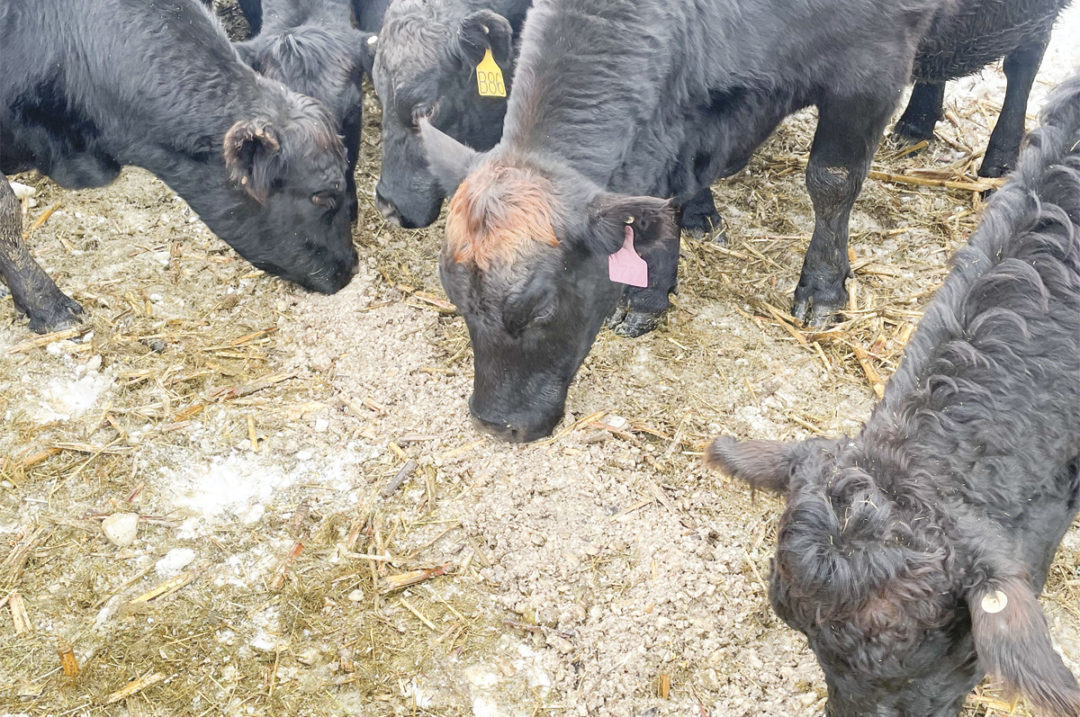Successful beef producers are constantly looking for ways to keep their cattle happy, healthy and well fed, while making sure to not break the bank. One way to ensure long-term profitability is to keep feed costs down. Sometimes that ever-present goal results in the producer looking for alternative sources of feed.
Cows love potatoes. This common crop is relatively high in energy in the form of carbohydrates and can often be accessed in large amounts for little or no cost. On a dry matter basis, potatoes are roughly the same quality feed as barley, according to North Dakota State University Extension. There are some pitfalls to look out for, however, when considering feeding cull potatoes to cattle.
One of the most important downsides of feeding potatoes to cattle is the very real danger they pose as a choking hazard. One dead animal quickly negates any cost savings provided by feed potatoes. Various farmers and ranchers have different methods of preventing cattle from choking on potatoes. Some chop the potatoes with a machine designed for that very purpose. Some allow the potatoes to freeze in winter; as they thaw, they become soft and pose less danger as a choking hazard.
The safest procedure is to make sure the potatoes are chopped or sliced into half-inch or smaller pieces.
A cow or steer choking on a potato is an ugly, disturbing sight. The animal often starts salivating heavily and can seem extremely distressed. Often, thankfully, if left to their own devices, cattle will eventually be able to pass a lodged potato on their own. In short, chopping potatoes is the best preventative measure in avoiding choking.
Potatoes are 70% to 80% water. This fact needs to be taken into consideration when evaluating their utility as feed, even when the potatoes are free. The time, labor and cost of moving feed that has relatively low dry matter content may make feeding potatoes uneconomical. On the other hand, when high-quality forage is in short supply, a mix of potatoes and lower-quality forage can help to keep cattle in good form.
Wernette Beef, a cow-calf operation raising Angus-Tarentaise cross cattle in central Michigan, feeds cull potatoes to cattle in winter.
“The biggest benefit is the cost saving,” says co-owner Karl Wernette. Wernette uses the potatoes to cut costs by replacing some hay with cull potatoes, which are often readily available in central Michigan.
“It depends on the year,” says Wernette, explaining that when the local potato farmers have a particularly good crop, fewer culls are available. Other years, “some potatoes might get a little sunburned or be a little small,” allowing for more available culls.
Wernette says there is a limit to the amount of potatoes they feed: Each brood cow gets roughly 50 pounds of potatoes per day in addition to hay. The potatoes are fed on top of spread-out hay.
“The risk of choking is there,” admits Wernette. Wernette Beef solves this problem by running the potatoes through a Kuhn side-sling manure spreader, which chops the potatoes. “It looks like potato salad when it comes out,” says Wernette. “The benefits outweigh the costs.”
Like any feed, the availability of free or cheap cull potatoes is often dependent on the weather and market. When the potato crop in an area is subjected to stress by drought or excessive rain, there are often more potatoes that don’t meet market requirements. During years of high crop yields, prices might drop, meaning an abundance of culls. When planning on feeding cull potatoes to cattle, it is wise to consider the boom-and-bust cycle of their availability.
Colt Knight is a professor and livestock specialist with the University of Maine. He says potatoes “end up being a good feed if they are local.” Knight cites the cost of transporting a feed that is mostly water as a limiting economic factor, adding that another disadvantage is limited nutrition value – while high in carbohydrates, potatoes are quite low in protein.
“They don’t work well in growing cow diets,” says Knight, although he recognizes that they might have a place in maintaining mature cattle.
In Northern climates, another difficulty noted by Knight is the method of feeding. When potatoes freeze, they become impractical as a feedstuff, though Knight points to examples of some producers who use a wood chipper to eliminate the danger of choking.
Jim Gerritsen founded Wood Prairie Farm, a mail-order organic seed potato farm in northern Maine. But there is a connection between potatoes and beef on Wood Prairie Farm. For many years, Gerritsen has fed the leftover potatoes to his small herd of beef cattle.
“We turn a waste product into a resource,” he says.
In order to grow disease-free seed potatoes, Gerritsen employs a four-year rotation, meaning that any field will be in sod for three years before going back to potatoes. The cattle – the farm started with Dexters but is switching to Lowline Angus – are there to make use of the grass while utilizing the cull potatoes.
“We lost one cow many years ago,” says Gerritsen about the danger of choking. Since then, he has had a local company construct a grinder for the culls. Gerritsen believes the problem of choking mostly arises when cows get excited for the potatoes and start jostling or fighting over them.
“If you had one cow, you would never have a problem,” he says. The grinder on Wood Prairie Farm, he says, has solved any potential problem.
One way to store cull potatoes for future use is to ensile them. In order to make quality potato silage, the potatoes should be chopped, sliced and mixed with dry forage such as straw or hay. Ranchers should consult with a local nutritionist to determine the best way to utilize potatoes in their herd.
Many states have laws on the books regarding piles of cull potatoes. For example, in Maine, cull piles must be removed or adequately covered after June 10 of each year. Farmers are subject to significant fines if cull potatoes are not handled properly.
As a potential tool for cutting feed costs and providing adequate nutrition, the common potato has potential to keep many beef animals well fed and profitable this winter.











